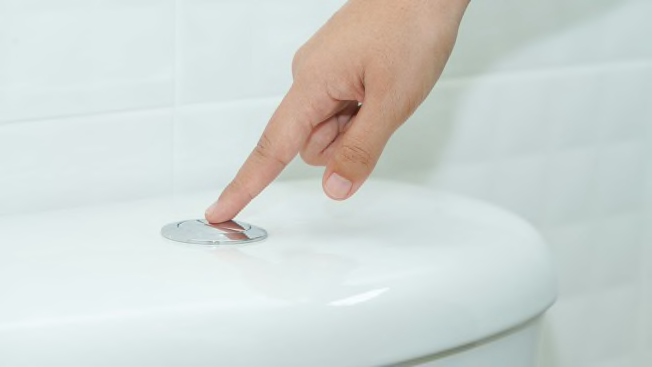What to Do If Your Low-Flow Showerhead or Toilet Isn't Cutting It
It may be time for an upgrade. Here's why.
When you shop through retailer links on our site, we may earn affiliate commissions. 100% of the fees we collect are used to support our nonprofit mission. Learn more.

A busy bathroom uses a lot of water, and low-flow toilets and showerheads (which have been the norm for a few decades now) have probably saved you thousands of dollars on your utility bills over time. But some low-flow fixtures can be disappointing, as CR has found in our tests of showerheads and toilets.
If you’re forced to endure a wimpy spray-down or a weak flush day in and day out, you may need to buy a better piece of plumbing. Here’s the lowdown on low flow.
Living With Low-Flow Showerheads
Showerheads sold since 1994 can use a maximum of 2.5 gallons per minute, according to federal law. A handful of states have adopted maximums of 2.0 gallons per minute, which matches the Environmental Protection Agency’s WaterSense standard. A few states have gone a step further, adopting maximums of 1.8 gallons per minute. In an average household, showers account for 20 percent of the water used, according to the EPA, so anything you can do to trim that down is significant.

Photo: Getty Images Photo: Getty Images
The Real Issue Behind Water-Efficient Toilets
Any new toilet sold in the U.S. since 1994 counts as a low-flow toilet, using a maximum of 1.6 gallons of water per flush. Some states have recently adopted even-stricter water-saving standards, limiting the water use to 1.28 gallons per flush (matching the requirements of the EPA’s optional WaterSense standard). If you still own a toilet installed before 1994, it probably uses 3.5 gallons or more per flush—and all that extra water really adds up. Even today, toilets account for 24 percent of an average household’s water use, according to the EPA. That’s more than any other fixture or appliance.
Early low-flow toilets (roughly from the mid-1990s through the mid-2000s) were famously bad. The pages of Consumer Reports had plenty of references to their poor performance. In 2011, U.S. Senator Rand Paul declared in a Senate Committee on Energy and Natural Resources hearing that “frankly, my toilets in my house don’t work.” And at least one toilet manufacturer admitted it sold a lot of crummy commodes during those years.
If your toilet hails from that era—or you just have an infuriatingly hard time flushing anything down—it’s time for an upgrade. Our testing confirms that plenty of newer models can send serious waste down the drain, no problem. That’s because, over the years, bowl shapes and flushing mechanisms have been optimized for stronger water flow. Some models have anti-stick coatings applied to their bowls. Best of all, you don’t have to spend a lot. Some of our top performers cost less than $200; our Best Buy recommendation goes for only $100.
Even those needing extra help in the solid-waste-disposal department have options. In this case, consider toilets with:
- Dual-flush options: These models have separate buttons for number-one (liquid) and number-two (solid). If you’re in a state that requires toilets with a maximum of 1.28 gallons per flush, these toilets are still allowed the full 1.6 gallons per solids flush. That’s because the liquid settings use only about 1 gallon, so the two settings offset each other and are counted as though they average out to meet the state requirements.
- Pressure-assisted flushing: These provide truly intense flushing action. Inside the main water tank, there’s a smaller tank where air pressure builds up and is then thrust down the waste line. So they can clear large amounts of waste with relatively little water. High prices and noise are the main downsides, and they may not work in homes with inherently low water pressure.
Top-Rated Toilets From CR's Tests
CR members can read on to see some of our top-performing toilets. (We also have some ratings for showerheads, too, though we no longer actively test new models in this category.)















